Body
Whether you need your coworker to check your inbox or your admin to manage your calendar, the ability to give delegate access to your Exchange Online data is important. Historically, the ability to configure delegate access was available only in Outlook. Now, you’re able to configure both folder permissions and calendar delegation directly from Outlook Web App in Office 365.
Go to Outlook Web App (OWA) access,
and log in using your email: StarID@minnstate.edu and password
Now, Let’s take a quick look at how this works.
Calendar delegation in Outlook Web App
Molly has asked Alex to watch over her calendar while she is out. In order to give others access to her calendar, she needs to first share her calendar with them and then give them delegate permissions. She starts by clicking SHARE in the top right corner of the calendar module. She can also do this by right-clicking her calendar to open a context menu where she can click share calendar.
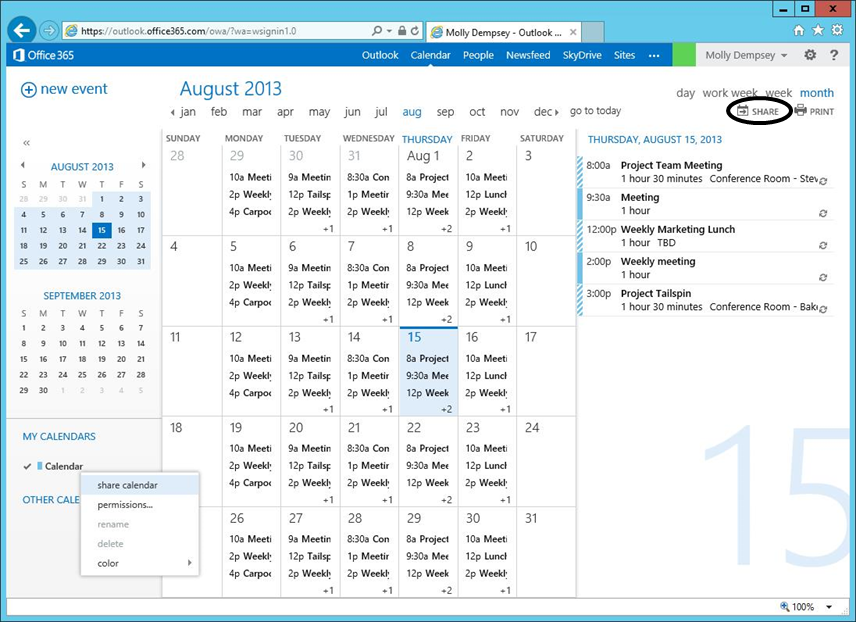
She then types in Alex’s name, and if he doesn’t immediately show up, she can search for him in Contacts & Directory.
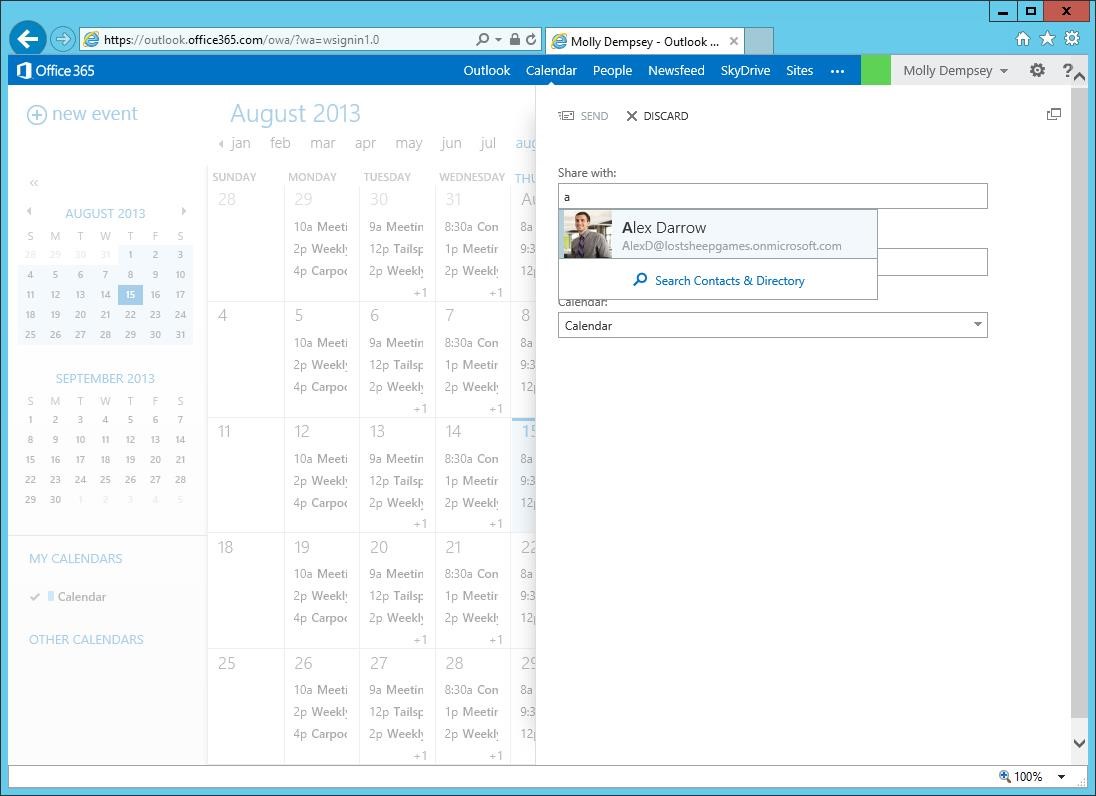
Alex is now added to the list, and she can select which permissions she wants him to have. In this case, she wants him to be a Delegate.
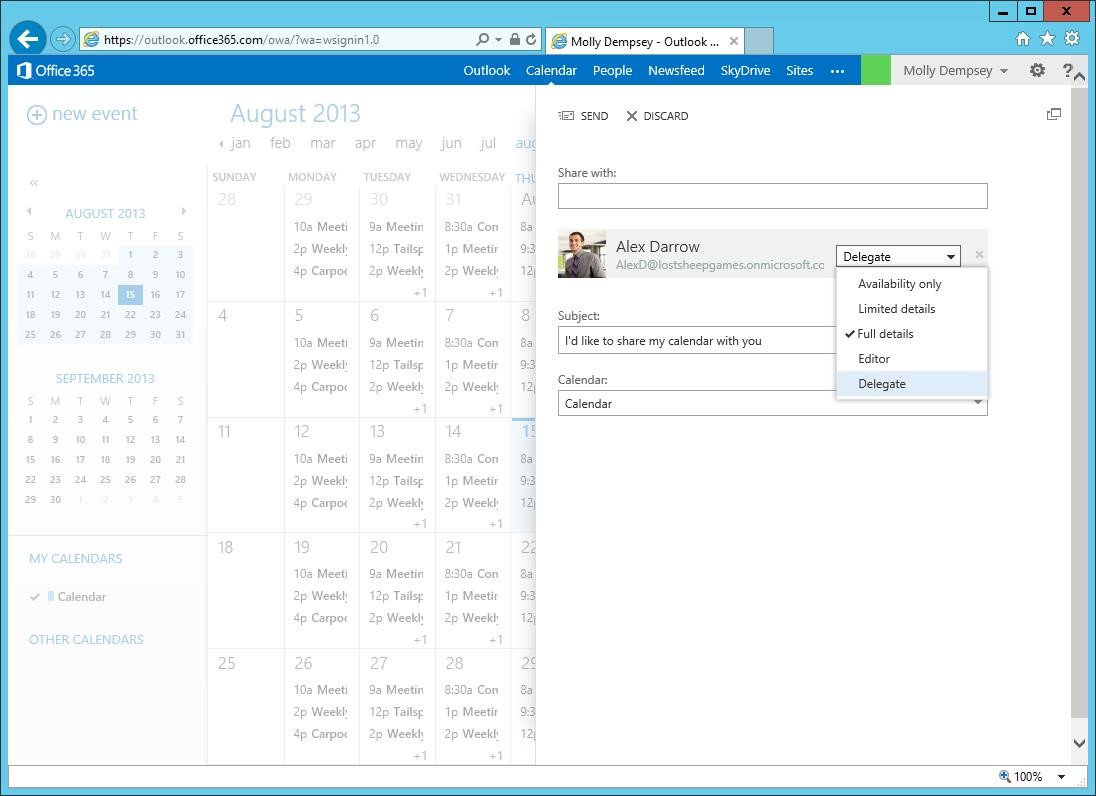
A couple of things to note here. We inform you that a delegate is going to get copies of all your meeting requests. This is so they can respond on your behalf without having to open your calendar or inbox to do so. Appointments you have marked Private are by default not viewable by a delegate, although we give you the option to allow this.
Once Molly is done here, Alex will get an email confirming the permissions she has given him. You’ll notice that she changed the subject to “Please monitor my calendar while I’m out” as a customized reminder to him. Once everything is all set, she clicks SEND at the top.
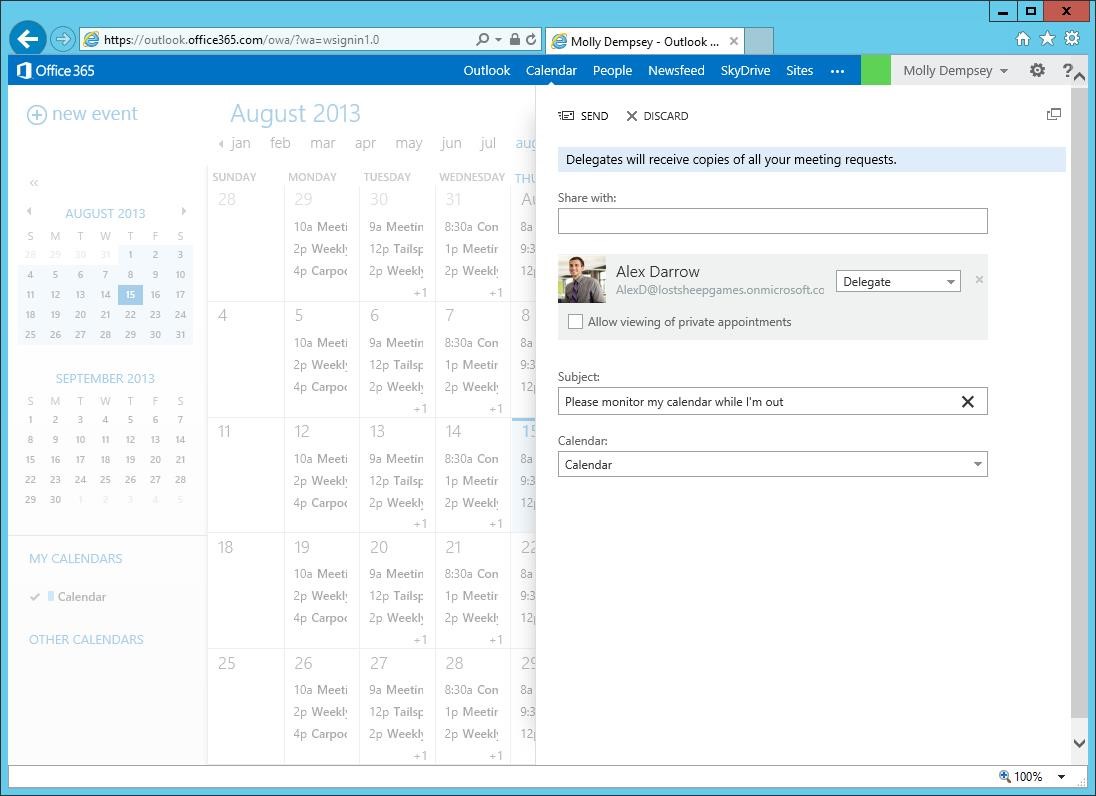
Now Molly can take her leave with the peace of mind that Alex has everything he needs to manage her calendar.
But what about when she returns? Does Alex still need to have delegate permissions to her calendar? Maybe he does, maybe he doesn’t, or maybe he just needs to see her calendar but not respond to any of her meeting requests. Molly can configure all of these scenarios. She simply right-clicks her calendar and selects permissions…
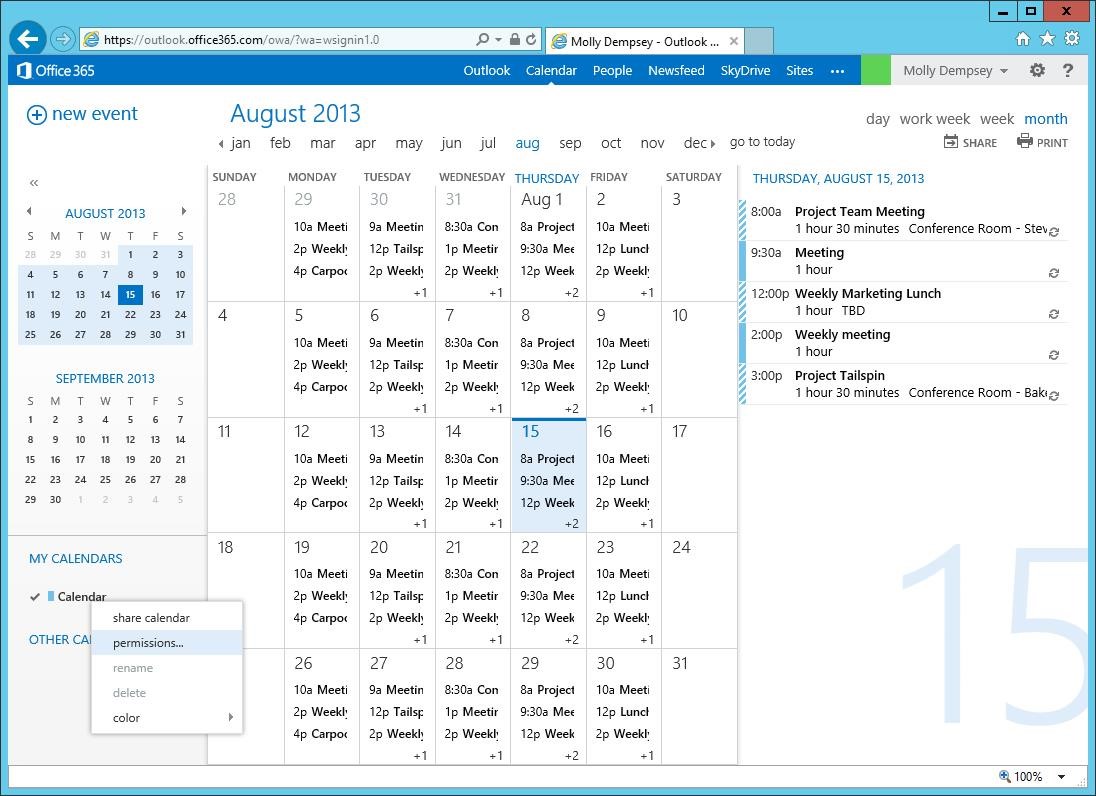
From here Molly can see that Alex has delegate permissions and Sara can see full details. If she wants, she can just remove Alex by clicking the x on his card or she can choose to downgrade his permissions to something less, like “Full details” or “Limited details.”
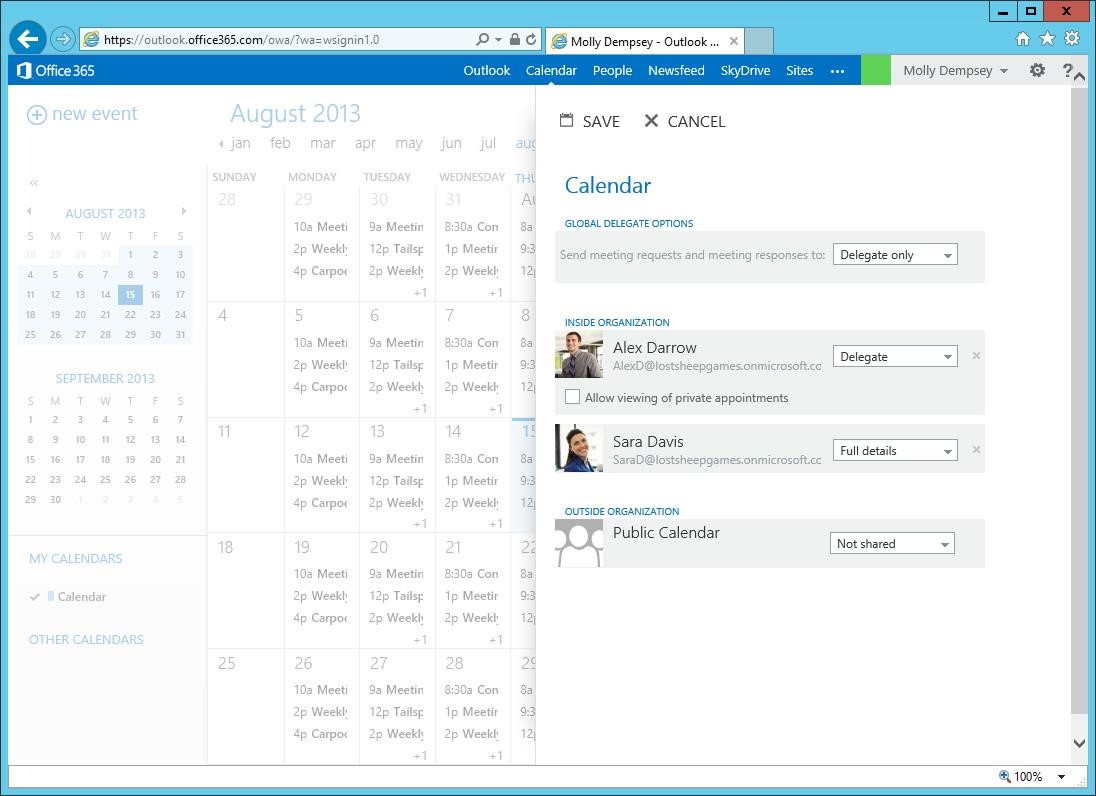
Molly can also configure how her meeting requests are to be handled. Her delegates will always get a copy of the meeting request and will be allowed to respond on her behalf. The question is, what does she want to see in her own inbox? Does she want to be able to respond to meeting requests for herself? If so, she can select “Both delegate and me.” If she just wants to know that she has a meeting request but doesn’t want to take action on it, then she can select “Delegate only. Send me notifications.” Lastly, if she doesn’t want to be bothered with meeting requests at all, she can select “Delegate only.”
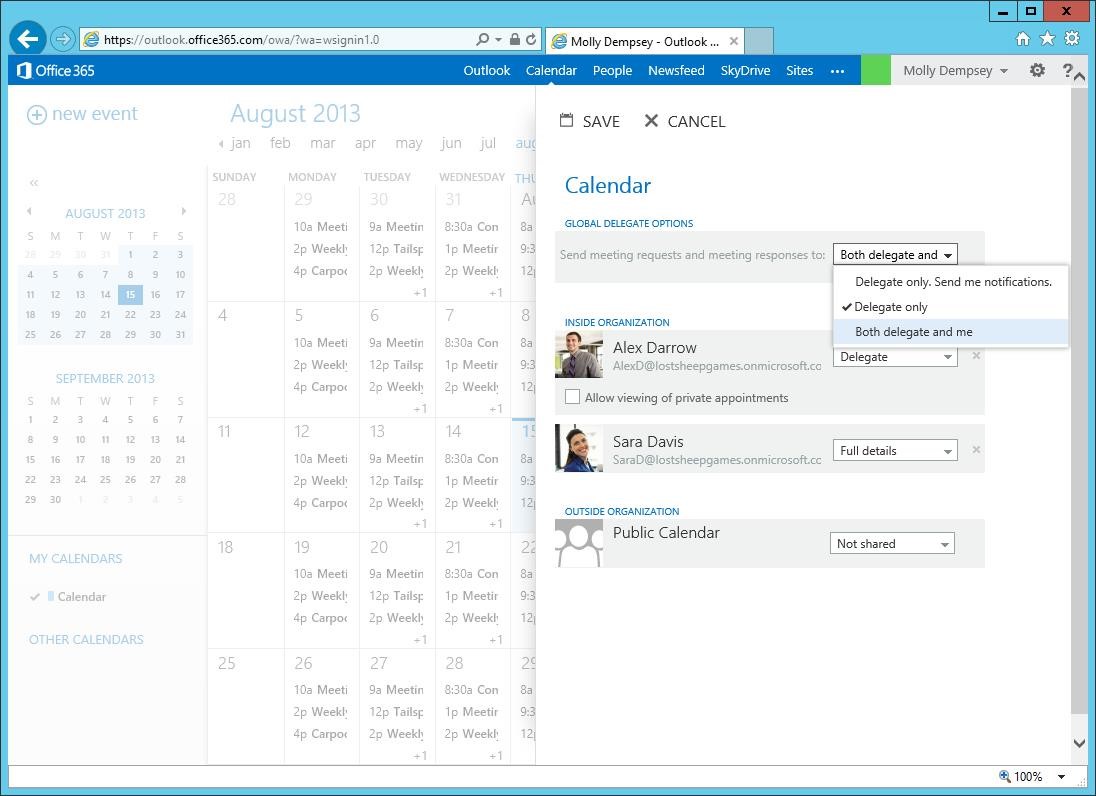
Molly can also configure delegate access to her calendar from her tablet device. She can open up Outlook Web App with a compatible mobile browser or OWA for iPad, and follow the same set of commands.
As you can see, delegate access configuration is a powerful feature. It’s something Outlook users have had for a long time, but now it’s also available on Outlook Web App.1 This provides users even more options to ensure their work gets done, even when they’re on vacation or leave.